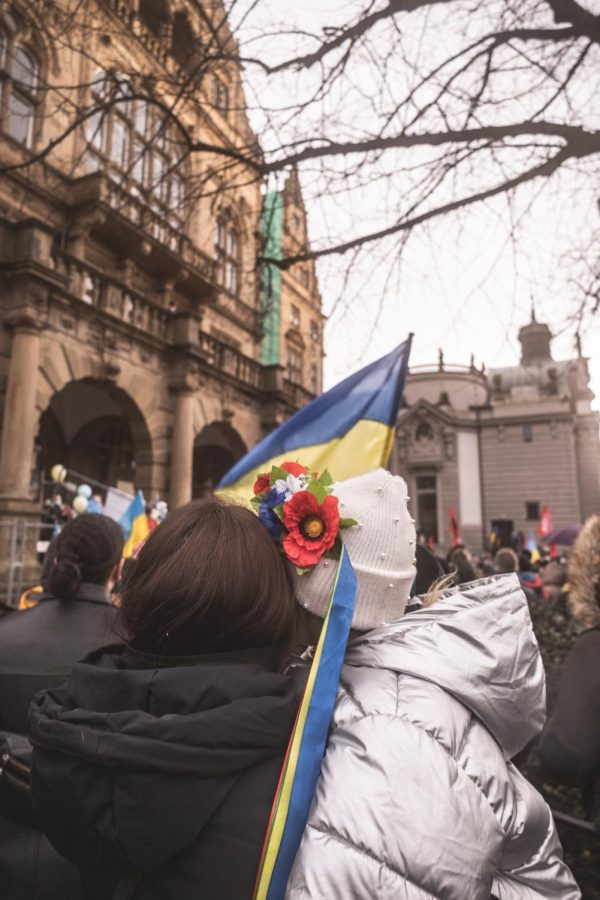The Russia and Ukraine war from a student perspective
May 31, 2022
With the rise in social media and cellular devices, a vast source of information is at our very fingertips. There is a constant stream of news and information that reaches the masses in many different forms. According to Pew Research Center, over 68 percent of adults older than 65 watch their news on TV. 54 percent of adults in the age range of 50-64 are watching their news on TV. However, this is different from the younger generations. 67 percent of adults between 30 and 49 are mainly getting their news from digital sources such as smartphones, computers, or tablets. Adults between 18 and 29 receive 71 percent of their news from digital sources. Older and younger generations both have an interest in the news, but their way of gaining information is through different means. The various sources of news can cause younger and older generations to further understand the same information because of the various sources they receive their information.
https://www.pewresearch.org/fact-tank/2021/01/12/more-than-eight-in-ten-americans-get-news-from-digital-devices/
A prominent feature of news sources has been the recent outbreak of war between Russia and Ukraine. In a survey of the students at Rockhurst, when asked how much the students knew about the war, most people said they were somewhat knowledgeable about the war. The Ukrainian-Russian War will be one of the most documented in history because of the unprecedented amount and accessibility of technology at hand with the public and the government, which can relay information back to news outlets for the public to see. The rise of war tensions and the purpose for the invasion consist of many different reasons, as stated by Russian president, Vladimir Putin.
However, this war makes many people worry about what will happen next. The Wall Street Journal has an article, How Generational Difference Shape Our Views of Ukraine War by Clare Ansberry, which talks about how the different generations go about their way of understanding the war and how they differ. The article talks about how each generation has a myriad of problems and developments that shape their viewpoints and collective attitudes that varies socially and economically. The younger generation could have a different view than older generations because of the desensitization of violence that Millennials and Generation Z see constantly.
In my personal experience, I hear my classmates and friends joke about death as if it were nothing. Because of the introduction of technology and the younger generation that constantly has to be on the edge of information, they see things other people do not often. The internet can be an unregulated space where younger generations see violence constantly, which causes them to think violence is commonplace. As a student, I have had to practice drills for school shooters and have seen other schools’ reactions to school shooters a block away from us. The experience is terrifying, but there isn’t much else a student can do except hide under a desk hoping a bullet doesn’t whizz by their head.
Because news and media constantly display to the public some of the most harmful things I have seen in my life, I believe that the Millennial and Generation Z generations are desensitized to violence because of their experiences heard and experienced. While Millennials and Gen Z have not been in physical wars and had to fear drafts or had missiles land in their backyards, this does not mean that the younger generations are less cognizant of world relations and current events that happened around then. I believe that the younger generations are very mindful of what is going on around them; however there is not much that can be done unless there is a change in the laws and the government itself takes action against the infractions of others.
My friends don’t talk about how Russia affects us because we know that if there must be a war, then everyone will be pulled in just like in World War II and it could have just as much of a mortality rate as that war. My friend don’t talk much about the new terrorist attack because we know that there will eventually be another one. We just have to be ready the next time. There are many different feelings to being desensitized. There is not much shock anymore but rather, fear, anger, and hatred.
Just as how women carry pepper spray in the events of an attacker, boys visualize tackling the school shooter and being a hero. Girls visualize the best escape routes and how to subdue someone in the best way and to get out the lease harmed way possible. I still know the best way I can escape from my high school in the event there was a world threatening disaster. So does my best friend I went to high school with. This was the topic of conversation on many lunch days amongst the rest of my friend group. At the end of the day, our goal was to make it home like any normal adult, but we weren’t adults. We were desensitized teens that responded to the violence of the world around us in the best way possible.
For more information, check out and other articles linked:
https://www.cfr.org/global-conflict-tracker/conflict/conflict-ukraine


